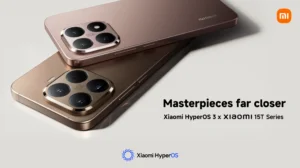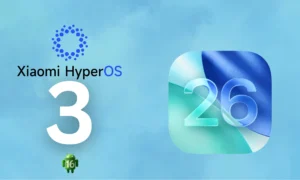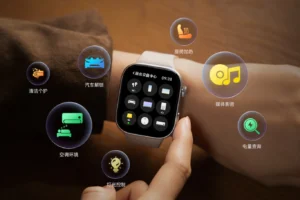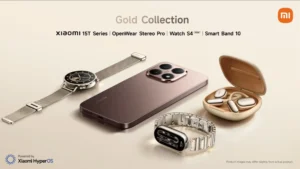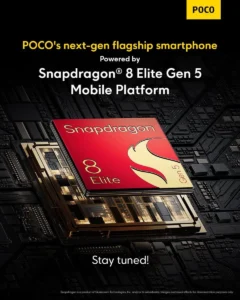Seamless Xiaomi Phone Integration with Windows 11: A New Era of Connectivity

The synergy between smartphones and PCs has become increasingly vital for enhancing user productivity. Xiaomi, a prominent global smartphone manufacturer, is poised to integrate its devices seamlessly with Microsoft’s Windows 11. This development aims to create a more cohesive workflow for Xiaomi users, bridging the gap between mobile and desktop ecosystems. In this article, we delve into the implications and potential of this exciting integration.

The Evolution of Phone-PC Integration
Integrating smartphones with PCs isn’t a new concept, but recent advancements have made it more user-friendly. Microsoft has led this trend with its Phone Link app, allowing users to connect Android and iPhone devices to Windows PCs for easy access to messages, calls, notifications, and file transfers. Initially, Samsung devices enjoyed deeper integration with Windows 11, thanks to partnerships and optimized software. However, recent updates have expanded this functionality to other Android manufacturers, including Xiaomi, signaling a broader push for universal compatibility.
Xiaomi’s entry into this space aligns with its strategy to enhance its HyperOS ecosystem, which powers its latest smartphones like the Xiaomi 15 and 14T Pro. HyperOS, built on Android, aims to provide a unified experience across Xiaomi’s devices, including phones, tablets, and IoT products. The integration with Windows 11 could extend this ecosystem to PCs, creating a seamless bridge for users who rely on both mobile and desktop platforms.
Features of Windows 11’s Phone Integration
Windows 11’s phone integration, facilitated through the Phone Link app, introduces several features that enhance connectivity between smartphones and PCs. Recent updates, particularly in the Windows 11 24H2 build, have made these capabilities more accessible through the Start menu. Key features include:
- Battery Status and Connectivity: Users can view their phone’s battery level and connectivity status directly from the Start menu.
- Messages and Calls: Access and respond to text messages, listen to voice messages, and manage calls without picking up the phone.
- File Transfers: Easily share photos, videos, and other files between the phone and PC.
- Recent Activities: Continue tasks started on the phone, such as viewing photos or managing notifications, directly on the PC.
These features were initially rolled out for Android devices and have since been extended to iPhones, ensuring broad compatibility. Given Xiaomi’s commitment to adopting the latest Android-based HyperOS updates, its devices are well-positioned to leverage these capabilities.
Xiaomi’s Role in the Integration
While specific announcements regarding Xiaomi’s Windows 11 integration are limited, recent activities indicate a strong foundation for this move. At Mobile World Congress (MWC) 2025, Xiaomi showcased its flagship devices, the Xiaomi 15 and Xiaomi 15 Ultra, which run HyperOS 2 based on Android 16. These devices support Google services, ensuring compatibility with Microsoft’s Phone Link ecosystem, unlike some other manufacturers.
Xiaomi’s early adoption of the Android 16 Developer Preview for the Xiaomi 15 and 14T Pro demonstrates its commitment to software innovation. The Android 16 beta, released in April 2025, includes features aligning with Microsoft’s vision for deeper OS integration, such as improved app streaming and cross-device connectivity. This positions Xiaomi phones to take full advantage of Windows 11’s Phone Link capabilities, potentially offering a smoother experience compared to competitors.
Moreover, Xiaomi’s HyperOS 2 emphasizes ecosystem connectivity, with features like cross-device app sharing and unified notifications. Integrating these with Windows 11’s Start menu sidebar could create a highly intuitive experience, allowing users to manage phone activities directly from their PC.
Challenges and Considerations
Despite the potential benefits, challenges exist. Windows 11’s phone integration relies heavily on the Phone Link app and Bluetooth LE, requiring users to install the latest version and ensure their PCs meet hardware requirements. Some Xiaomi users may need to update their devices to the latest HyperOS version, which could be a hurdle given the company’s varied update rollout schedule.
Additionally, recent Windows 11 updates have faced issues, such as blue screen crashes, which could affect the reliability of phone integration. For example, the April 2025 updates caused problems with Windows Hello and USB printers, highlighting the need for robust testing to ensure a stable experience.
In the competitive premium Android market, Xiaomi faces pressure, particularly from Samsung, which has a long-standing partnership with Microsoft. To stand out, Xiaomi may need to introduce exclusive HyperOS features tailored for Windows 11, such as app mirroring or seamless IoT device control.
The Broader Implications
The integration of Xiaomi phones with Windows 11 could significantly impact both companies and their users. For Xiaomi, it strengthens its position as a premium Android brand, appealing to professionals who value productivity. The company’s recent 300% stock rally indicates its capability to invest in such innovations.
For Microsoft, expanding Phone Link to include more Android manufacturers like Xiaomi counters the narrative of sluggish Windows 11 adoption. With Windows 10’s end-of-support approaching, Microsoft needs to incentivize users to upgrade, and robust phone integration could be a compelling reason.
For users, the benefits are clear: a unified ecosystem where tasks flow seamlessly between phone and PC. Picture a Xiaomi 15 user drafting a document on their PC, receiving a message via the Start menu, and transferring a photo without switching devices. This level of integration could redefine productivity for millions of users.
Looking Ahead
While concrete details about Xiaomi’s Windows 11 integration are still emerging, the groundwork is in place for a promising partnership. Xiaomi’s HyperOS 2, built on Android 16, aligns with Microsoft’s Phone Link framework, and the company’s focus on ecosystem connectivity aligns with Windows 11’s vision. As Xiaomi rolls out updates for devices like the Xiaomi 15 and 14T Pro, users can expect smoother integration with Windows 11.
To stay updated, users should ensure their devices run the latest HyperOS version and check for Phone Link compatibility. Meanwhile, Microsoft’s ongoing improvements to Windows 11 will likely make this integration even more compelling.
In summary, the prospect of Xiaomi phones receiving smooth integration with Windows 11 marks an exciting development. By combining Xiaomi’s innovative hardware with Microsoft’s powerful platform, users will gain a more connected and productive experience. This integration could set a new standard for phone-PC connectivity.
Xiaomi phones integration with Windows 11
Xiaomi phones are set to integrate seamlessly with Windows 11, enhancing user productivity and connectivity across devices.
Xiaomi,Windows 11,Xiaomi 15,Xiaomi 14T Pro,HyperOS,Phone Link
